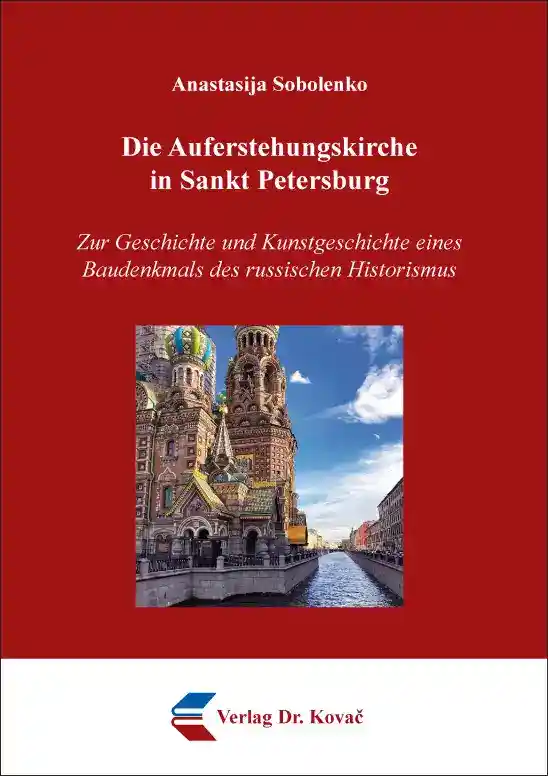Anastasija SobolenkoDie Auferstehungskirche in Sankt Petersburg – Zur Geschichte und Kunstgeschichte eines Baudenkmals des russischen Historismus
Schriften zur Kunstgeschichte, volume 78
Hamburg 2022, 356 pages
ISBN 978-3-339-12698-6 (print)
ISBN 978-3-339-12699-3 (eBook)
About this book deutschenglish
Sunday, March 1st, 1881. After inspecting a military parade and visiting his cousin, the Grand Duchess Catherine, Tsar Alexander II. is on his way back to the Winter Palace. On a quiet street in the middle of snowed in St. Petersburg, the capital of the Russian empire, he is met face to face with the members of a radical leftist organization. They call themselves “Narodnaya Volya” (“The People’s Will”) and they are carrying bombs. After seven failed attempts on Alexander’s life, this one is successful. After the Tsar dies, his son Alexander III. ascends the throne and expresses the wish to build a church on the spot next to the Catharine canal where his father was assassinated. The new ruler wishes for a building “like in the old days, prior to the ruling of Peter the Great”.
In the next twenty-six years one of the most prominent buildings of the city was constructed. After two rounds of contest an unlikely duo of authors emerged triumphant. Past all of the architectural changes the foundations were finally laid in 1883. The one of a kind church is a masterpiece of Russian historicism and mosaic art, yet it hasn’t been thoroughly discussed in contemporary art history literature.
This PhD thesis attempts an in depth analysis of the major aspects of the Church of Savior on Blood, such as the political and cultural events of the reigning period of Alexander II., which led to forming of anarchist organizations and protests, which in turn led to several assassination efforts on him; the long and complicated search for the right project to fulfill his successor’s wishes of a sanctuary in the image of the Moscow and Yaroslavl church building traditions of the 16th and 17th centuries. The possible antetypes for the Savior on Blood, the engineering innovations used in the construction process, the fate of the building in the difficult 20th century and its meaning as an example of the architecture of Russian historicism, but above all the most outstanding characteristic of the church – its rich and varied mosaics and their meaning in the context of sacral orthodox art in the late 19th century and beyond.
This book is intended for readers, who are interested in history, art history, architecture, sacral art, but also this one particular church in St. Petersburg, which was been largely undiscussed in the scientific literature in other languages than Russian until now.
